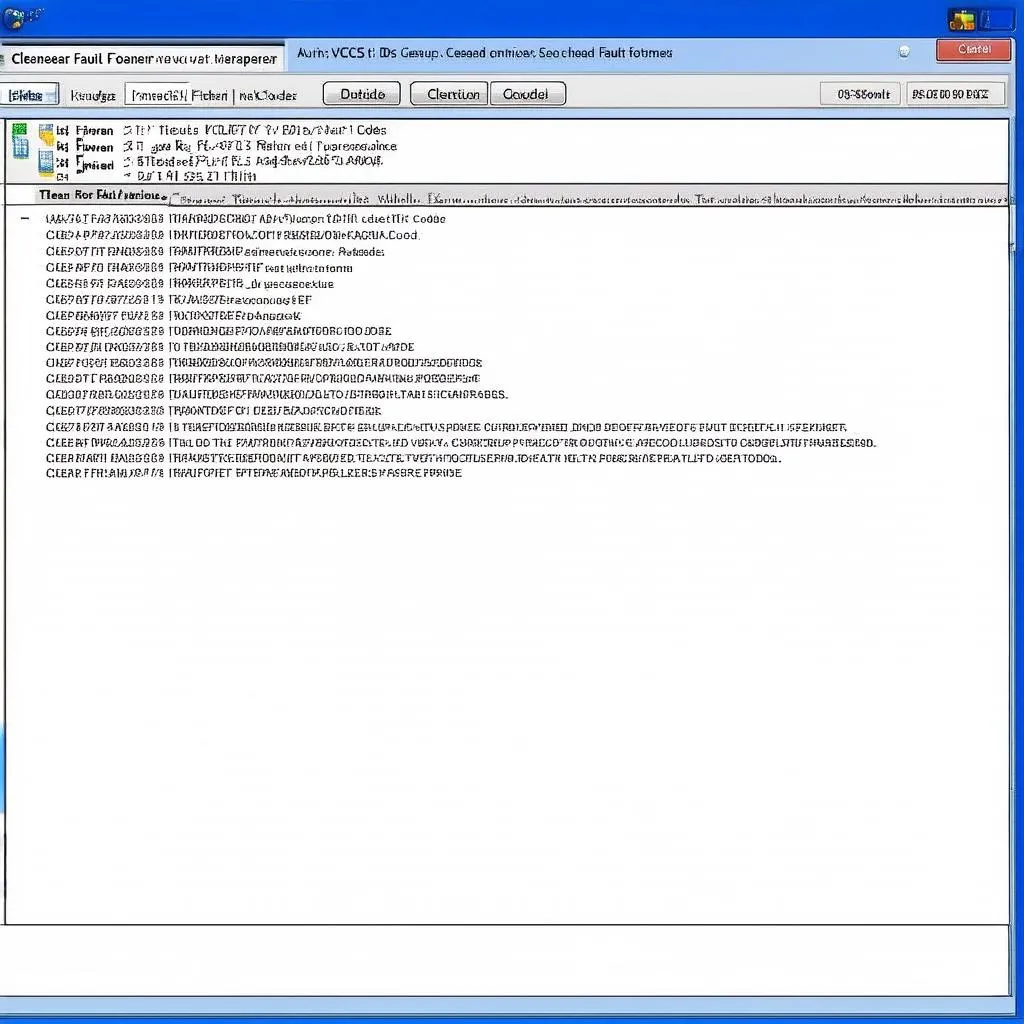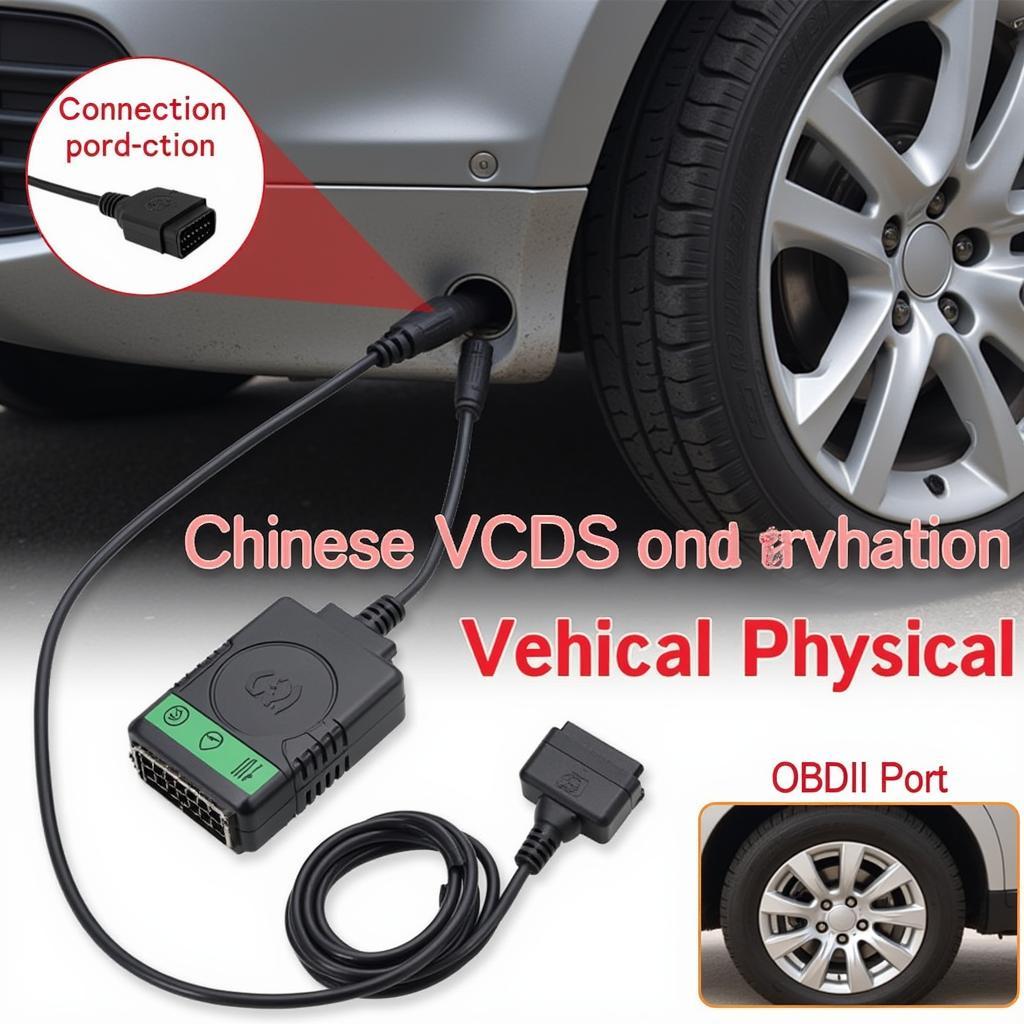Performing a VCDS DPF soot level reset is a crucial maintenance procedure for diesel vehicles. Understanding this process can save you time and money, whether you’re a car owner, a mechanic, or a technician. This guide will walk you through the intricacies of VCDS DPF soot level resets, providing you with the knowledge you need to maintain your diesel vehicle’s health.
What is a VCDS DPF Soot Level Reset?
A Diesel Particulate Filter (DPF) traps soot from the exhaust gases of a diesel engine. Over time, this soot accumulates, increasing the back pressure in the exhaust system. When the soot level reaches a certain threshold, the engine control unit (ECU) initiates a regeneration process to burn off the accumulated soot. Sometimes, a manual reset is required using a diagnostic tool like VCDS (VAG-COM Diagnostic System) after a forced regeneration or DPF replacement. This is what we refer to as a “VCDS DPF soot level reset.” This reset essentially tells the ECU that the DPF is clean and allows the system to function correctly.
You can learn more about accessing the DPF system using VCDS on our page about vcds security access code dpf.
Why is a VCDS DPF Soot Level Reset Necessary?
If the soot level isn’t reset after a DPF regeneration or replacement, the ECU might continue to operate under the assumption that the DPF is still full. This can lead to frequent regeneration attempts, reduced fuel efficiency, and even limp mode activation. A VCDS DPF soot level reset ensures the ECU has accurate information, preventing these issues. This process is particularly important after a forced DPF regeneration using VCDS or after a physical DPF replacement.
How to Perform a VCDS DPF Soot Level Reset
Performing a VCDS DPF soot level reset requires careful attention to detail. The procedure varies slightly depending on the specific vehicle model, but the general steps are as follows:
- Connect your VCDS interface to the vehicle’s OBD-II port.
- Turn the ignition on, but do not start the engine.
- Open the VCDS software on your computer.
- Select the “Select Control Module” option.
- Choose the appropriate module for your vehicle (usually “Engine” or “Powertrain”).
- Select “Advanced Functions.”
- Choose “Regeneration DPF.”
- Follow the on-screen instructions carefully. This usually involves entering a security access code and confirming the reset.
If you’re looking to reset other DPF-related values using VCDS, you might find our guide on vcds reset dpf values helpful.
Common Issues and Troubleshooting
Sometimes, you may encounter issues during the reset process. Here are a few common problems and their solutions:
- Incorrect Security Access Code: Double-check the code and ensure it’s correct for your specific vehicle model.
- VCDS Communication Error: Check your cable connection and ensure the software is up-to-date.
- Reset Not Completing: Ensure the DPF regeneration process has been completed successfully before attempting the reset.
For a comprehensive understanding of DPF regeneration with VCDS, check out our guide on vw dpf regeneration procedure vcds. Also, for Passat owners, specific VCDS procedures can be found on our vcds passat page.
When Should I Perform a DPF Soot Level Reset?
A DPF soot level reset is typically necessary in the following situations:
- After a Forced DPF Regeneration: After performing a forced regeneration using VCDS, resetting the soot level is essential.
- After DPF Replacement: A new DPF requires a reset to inform the ECU of the change.
- After Resolving DPF-Related Fault Codes: If you’ve resolved a DPF fault code, a reset might be necessary to clear the code and allow the system to function correctly.
Conclusion
Understanding and performing a VCDS DPF soot level reset is vital for maintaining the health and efficiency of your diesel vehicle. By following this comprehensive guide and addressing potential issues, you can ensure your vehicle’s DPF operates correctly, minimizing the risk of costly repairs and maximizing performance. For further information on DPF adaptation with VCDS, refer to our guide on vcds dpf adaptation.
Need assistance? Contact us via WhatsApp: +1 (641) 206-8880, Email: CARDIAGTECH[email protected] or visit us at 276 Reock St, City of Orange, NJ 07050, United States. Our 24/7 customer support team is ready to help.


